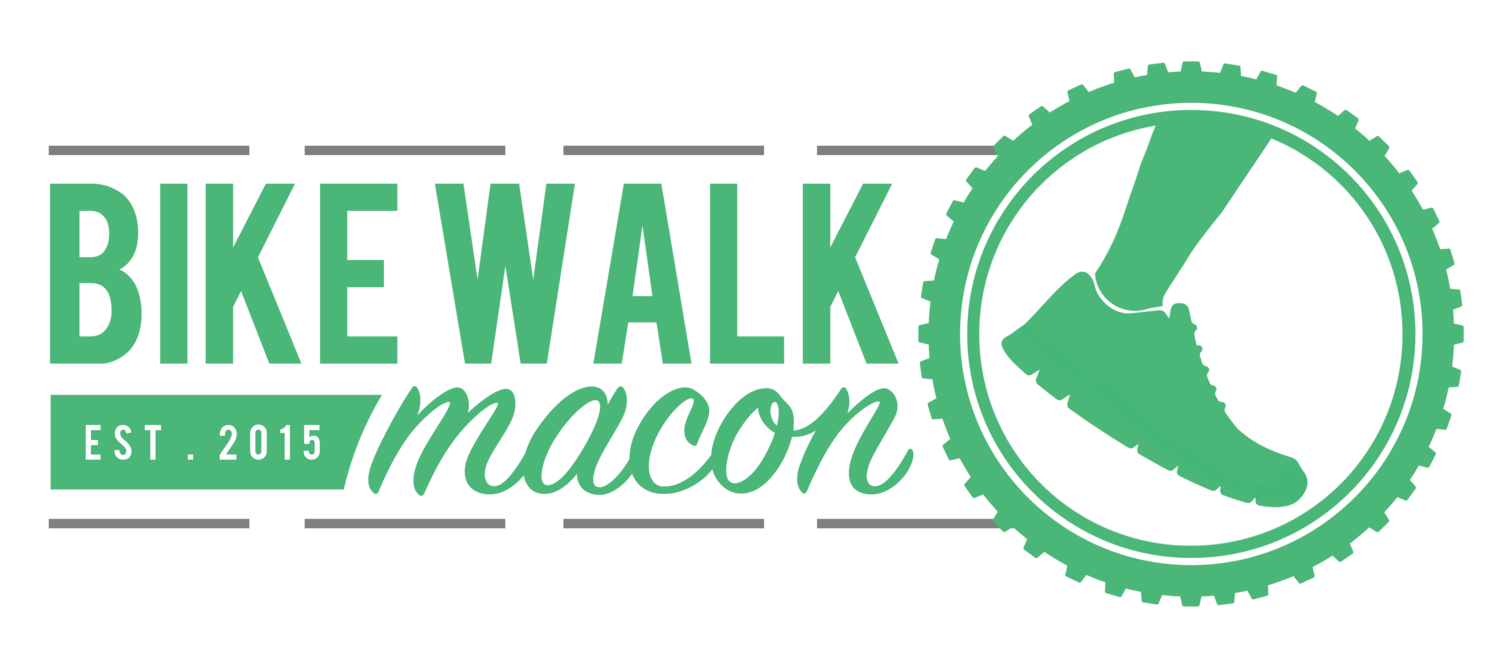FIVE TAKEAWAYS FROM ON THE TABLE MACON
Blog post by Bike Walk Macon intern and Mercer University student Erica Duncan
On Wednesday, October 17th, hundreds of Maconites came together to connect and collaborate on our most prevalent social issues. From civic pride to homelessness and everything in between, there were nearly seventy conversations taking place across Macon throughout the day. At Bike Walk Macon, we hosted breakfast and afternoon table sessions to talk about transportation options, including what we’re doing right and how we can move forward. Here are five major takeaways from our table:
1. There are lots of different reasons to care about improving transportation options.
One of the first questions we asked at our table was, “What inspires you to be passionate about transportation options?” Of course, we already knew there would be a diversity of reasons, but On The Table helped humanize the faces of the movement. We heard the stories of people with disabilities, a social worker whose clients can’t get to work or job training opportunities, and recreational cyclists alike. Hearing our community share their motivation helped highlight that the need for alternative transportation isn’t specific to one group or a “luxury” issue, but rather something that affects us all.
2. It isn’t all bad.
Before we tackled our challenges and obstacles, we first focused on what Macon is doing right. For example, Macon Transit Autority CEO Craig Ross let us in on MTA’s plans to expand with seven new buses, three new paratransit vans, a new phone app with real-time bus arrival information, and LED lighting at eleven bus stops. We also heard about local sidewalk projects that are making it safer for pedestrians; initiatives like Open Streets Macon, Macon Bike Party, and Macon Connects; and the beginning of more inclusive street improvements, like the bike lanes on Montpelier and in Pleasant Hill. More and more, our voices are being heard and we are seeing change.
3. Our biggest obstacle is public opinion.
When asked their opinion on what’s holding us back, Maconites had lots to say. The traffic on major roads like Vineville and Zebulon is intimidating and dangerous for non-car road users. Moreover, some drivers don’t understand or heed share-the-road laws with bicyclists. The bus system is not always reliable and the sidewalk network is inconsistent. Others talked about the lack of or misappropriation of funding. Another common issue is one’s workplace environment, including whether there is bike parking available, shower facilities, incentives, or flexible policies for active commuters. Perhaps the biggest concern, though, was the lack of public support and awareness for transportation options on the whole. As one participant said, “People view [public transportation and active transportation] as a second class option because we’re treating it like a second class option” in our public discourse and funding choices. There is a lack of media attention on the issue, and a lack of humanity in the way we talk about the people who don’t have or use cars. “That cyclist is a human being; those bus riders are people. They’re not some subset of humanity,” said Alex Morrison, Executive Director of the Macon-Bibb County Urban Development Authority.
4. There’s a lot we can do to get moving in the right direction.
If you only had $100 and one day, what would you do to improve transportation options around Macon? This was the first question we posed to start brainstorming new ideas and solutions to our currently limited transportation options. Many of the proposals focused on changing the face of public transportation in an effort to transform public opinion. This could mean filming peoples’ stories, passing an old iPhone around the bus, starting an information campaign with local community partners’ social media and workshops, or otherwise making a social outreach effort to get people emotionally and positively invested. From a more logistical standpoint, some talked about installing rapid flashing beacons to improve pedestrian safety when crossing streets, implementing optical illusion paint to prevent drivers from blocking crosswalks, and advocating in their daily life. Other ideas were focused on increased collaboration through larger discussion forums and a new mobility committee, as well as starting a local pledge campaign and sharing informative statistics during crucial voting times. Overall, there was certainly no shortage of ambition and inspiration at our table.
5. Above all, we must strive to cultivate a positive attitude about what we’re doing right, what can be done better, and all the reasons why it matters.
Prior to On The Table, some feared that it would be too easy for these tables to descend into negativity and hopelessness about the many social issues our community faces; however, we saw the opposite occur. One participant reflected on another session saying, “Someone said that no one’s connected to their community, everyone’s inside, on their phones, and no one cares. But I sit on my porch all the time and every five minutes there’s someone jogging by, biking by. There is this outdoor lifestyle, this connection - maybe you’re just not outside to see it.” Another mused, “It’s just an entirely different world at fifteen miles an hour.” After meeting with these community members for just an hour, we’re all the more excited to be a part of the positive change happening in Macon and look forward to where we go from here.

